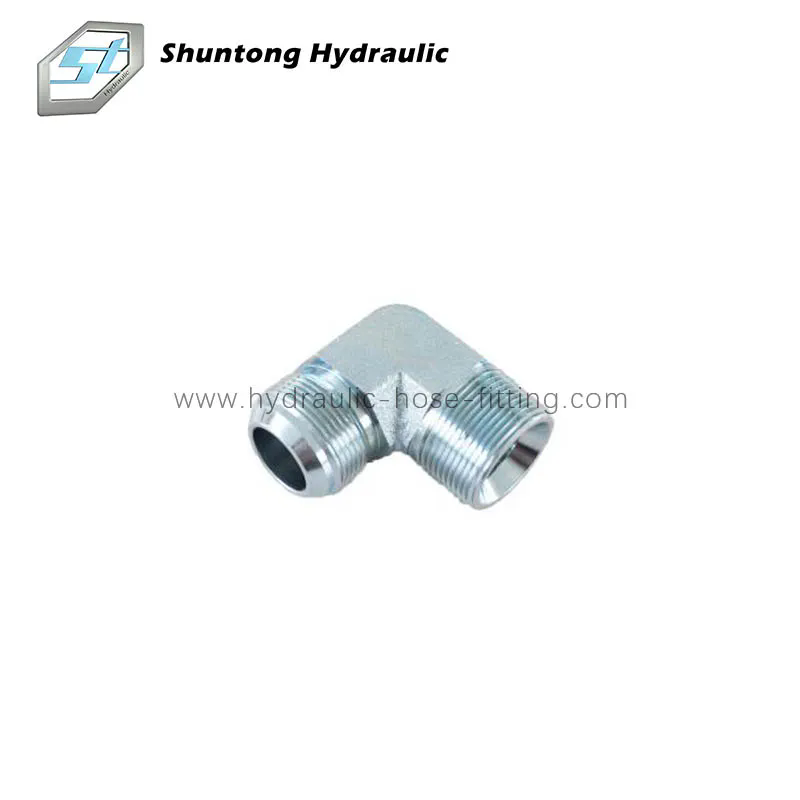A Complete Guide to Hose Adaptors: Versatility for Every Connection
2024-10-16
In the world of gardening, plumbing, and industrial work, the right connection between hoses can make all the difference. This is where hose adaptors come in. These handy fittings allow you to join hoses of different diameters or connect them to faucets, pumps, or other equipment. Whether you are working on a backyard irrigation system, installing a washing machine, or setting up an industrial water line, hose adaptors ensure a tight and leak-proof fit.
In this blog, we’ll explore what hose adaptors are, their common applications, and how to choose the right type for your project.
What is a Hose Adaptor?
A hose adaptor is a fitting designed to connect two hoses or a hose to other equipment like taps, pumps, or valves. It allows seamless compatibility between different hose sizes, types, or thread standards. Hose adaptors come in a variety of shapes, including straight connectors, reducers, tees, elbows, and quick-connect couplings.
They are available in several materials such as:
- Brass (highly durable and corrosion-resistant)
- Plastic (lightweight and affordable)
- Stainless Steel (ideal for industrial and high-pressure use)
Common Applications of Hose Adaptors
1. Gardening and Irrigation Systems
- Hose adaptors connect garden hoses to water taps, sprinklers, and irrigation systems.
- Reducer adaptors are used to connect hoses of different diameters for specific flow needs.
2. Plumbing Installations
- Adaptors are essential when connecting hoses to washing machines, dishwashers, or sinks.
- They ensure a watertight fit to prevent leaks.
3. RV and Marine Applications
- Many RV water systems require hose adaptors to connect freshwater tanks or sewage hoses.
- In marine applications, adaptors secure hoses to pumps or bilge systems.
4. Industrial Use
- Hose adaptors are used in factories to connect air hoses, fuel lines, or chemical delivery systems.
- High-pressure adaptors made from stainless steel are necessary for demanding industrial setups.
5. DIY and Home Repairs
- Adaptors make it easier to connect multiple hoses or customize setups for car washing, pool cleaning, and more.
Types of Hose Adaptors
1. Threaded Adaptors
- These connect hoses with different thread types (e.g., BSP, NPT, GHT).
- Example: Converting a hose with a garden hose thread (GHT) to a standard pipe thread.
2. Quick-Connect Adaptors
- Designed for easy installation without the need for tools.
- Ideal for frequently disconnected hoses, such as garden sprayers or power washers.
3. Barbed Adaptors
- Feature barbed ends that fit snugly inside flexible hoses.
- Commonly used in low-pressure applications such as drip irrigation or air lines.
4. Y-Adaptors and Tee Fittings
- Allow you to split the flow between multiple hoses.
- Perfect for garden setups where you need to water different sections simultaneously.
5. Reducer Adaptors
- These reduce the diameter of the hose connection, regulating the flow rate.
- Used when connecting larger hoses to smaller fittings.
6. Swivel Adaptors
- Provide flexibility by allowing the connected hose to rotate freely.
- Prevent kinks and tangles, especially for garden hoses or pool systems.
How to Choose the Right Hose Adaptor
When selecting a hose adaptor, consider the following factors:
1. Hose Diameter and Thread Type
- Ensure that the adaptor matches both the diameter and the thread standard of your hose or equipment.
- Common thread standards include GHT (Garden Hose Thread) and NPT (National Pipe Thread).
2. Material
- Brass: Ideal for garden hoses and plumbing due to its durability and rust resistance.
- Plastic: Lightweight and corrosion-resistant but less durable for high-pressure use.
- Stainless Steel: Best for industrial applications that require strength and chemical resistance.
3. Pressure Rating
- Check the adaptor’s pressure rating to ensure it can handle the PSI of your system, especially for industrial or high-pressure applications like power washers.
4. Temperature Resistance
- If the hose adaptor will be used with hot water or in harsh outdoor conditions, make sure it’s made from heat-resistant materials.
5. Connection Type
- For quick and easy installation, opt for quick-connect adaptors.
- For a more permanent solution, use threaded or barbed fittings.
Installation Tips
1. Check for Compatibility: Confirm that both the hose and adaptor match in diameter and thread type.
2. Use Teflon Tape: For threaded connections, wrap the threads with Teflon tape to create a better seal and prevent leaks.
3. Tighten Securely: Use a wrench or pliers to tighten threaded adaptors, but avoid over-tightening to prevent damage.
4. Test for Leaks: After installation, run water through the connection to ensure it’s leak-free.
5. Maintenance: Periodically inspect adaptors for wear or damage, especially if they are exposed to harsh weather conditions.
Top Benefits of Using Hose Adaptors
- Versatility: Adaptors enable hoses of different sizes and types to connect easily, offering more flexibility in setting up systems.
- Leak Prevention: A properly installed adaptor ensures a watertight fit, reducing water waste and preventing damage.
- Easy Installation: With quick-connect fittings, setting up and dismantling hoses becomes hassle-free.
- Cost-Effective: Adaptors save money by allowing you to reuse existing hoses and equipment without needing to buy new parts.
Conclusion
Whether you’re a gardener, a plumber, or someone working with industrial systems, hose adaptors are essential for creating seamless, leak-free connections. They come in a variety of materials, sizes, and types to suit different needs, ensuring versatility in any project. By choosing the right hose adaptor, you can improve the efficiency of your setup and avoid frustrating leaks or mismatched fittings.
With the right knowledge and selection, hose adaptors will save you time, effort, and money in the long run. Make sure to inspect your hose connections regularly and choose high-quality adaptors that match your specific requirements.



